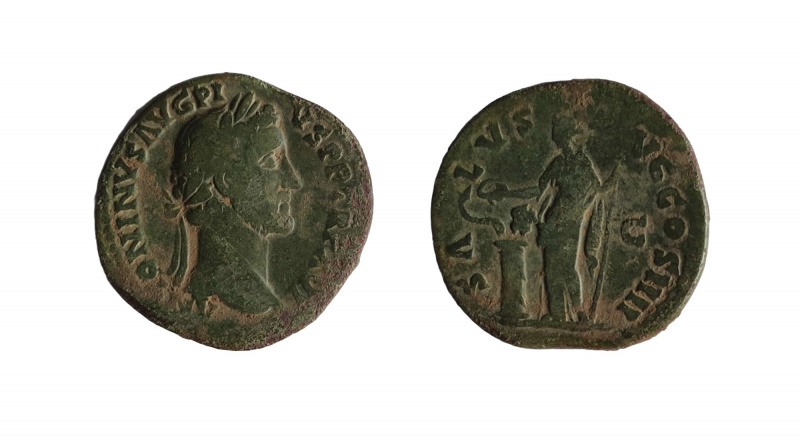Antoninus Pius, sestertius
I’ve been detecting for close to 25 years and during that time, on numerous sites, I have unearthed dozens of Roman base metal coins. Most were small but a few were large and almost all were in poor condition. Much depends on the type of soil a coin has been in for hundreds or thousands of years. If it contains no corrosive elements then coins will survive quite well; if corrosive elements are present than coins will be slowly eaten away.
Pictured here and shown enlarged is a large brass sestertius of Antoninus Pius, whose dates are AD 138 to 161. On the obverse is the laureate head of the emperor and a legend reading ANTONINVS AVG PIVS P P TR P XII.
On the reverse the standing figure of Salus holds a long sceptre and feeds a snake rising from an altar. Salus is flanked by S C (standing for Senatus Consulto, meaning by order of the Senate) and the accompanying legend reads SALVS AVG COS IIII.
David Sear, in volume II of Roman Coins and Their Values, lists the type as number 4216 but with an obverse legend ending with XVI. The type dates from AD 152-53 and was struck at Rome.
Valuation
Both sides of this sestertius would grade Fine or slightly better (enlargements can magnify small defects). There is no sign of any active corrosion and both sides have an attractive pale green patina, so the soil has been kind to this coin. It’s not a rarity but to a keen collector it should still be worth £70 – £80.
Coin Valuation Service
Have your coin or artefact valued using my free online coin valuation service

